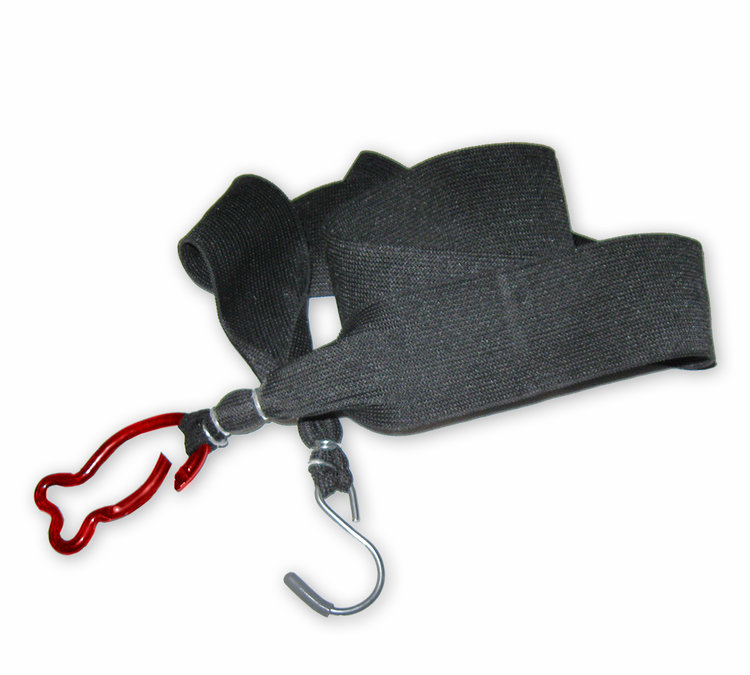If you shoot, you need a first aid kit in your range bag. You should have bandages, tourniquets, medical tape and surgical gloves. This is not a polite suggestion, but a basic requirement. Accidents happen, and with guns, these accidents can be particularly serious.
I’m not saying that it’s you who will have an accident. The idiot who pulls up to the range with his speakers blaring, swaggers down and blasts off a few magazines while holding his pistol “gangsta style” could be the casualty. What happens if he has poor trigger discipline and pops himself in the leg while tucking his piece into his waistband?
Are you prepared and equipped to deal with such an injury? A wound to the femoral artery can cause someone to bleed out in a few minutes. Waiting for the ambulance may not be a viable option. Can you keep the guy breathing long enough for the professionals to arrive?
So let’s talk about the H&H Medical tourniquets. These are compact, each costs less than a box of 9mm and weigh only 4 ounces for the TK-4L and 2 ounces for the TK-4. You can put both of them together in your back pocket with ease. There’s really no reason that you shouldn’t have a couple.
Both the TK-4 and TK-4L are designed for rugged combat use and are simple and quick to apply to a casualty.
In a 2007 NAVSEA study on tourniquet effectiveness, the TK-4 was in the lowest category of failure and reduced blood flow by 80% when applied to upper extremities.
While the TK-4 ranked very well in this study, it was found to be less than ideal when dealing with a leg wound, especially one involving the thigh. This led to the development TK-4L, a tourniquet designed specifically for wounds like the one shown in the video above. It’s stronger, beefier and has a tension fixture on the end of the strap to allow for maximum pressure to be applied by either the casualty or first responder.
The TK-4 and TK-4L have some important properties that I feel the need to address. I trained with the CAT (Combat Application Tourniquet) while in Ft. Benning, GA. This was in 2007, right before I went to Iraq on my first contract. Since I was a contractor, the Army did not issue me a first aid kit at all. Interestingly, they did issue me a tiny little ALICE pouch, supposedly for a wound bandage. I tied it onto my Interceptor vest and carried a pack of cigarettes in it.
I purchased a crappy “first aid” kit from a local surplus store because it was cheap. Going to a combat zone to make six figures and I couldn’t drop a little coin on something that could potentially save my life – stupid, right? Yes, yes it was.
But my stinginess wasn’t the only reason I didn’t buy a tourniquet. I didn’t want to have to figure out how to put a bulky tourniquet on my armor. And that’s where the TK-4L really shines. It’s a mere 4 ounces and slips into a pouch with ease. It’s this ease that could be the difference between life and death. Just as the pistol that’s with you is ALWAYS more useful than the more powerful pistol you left at home, the tourniquet you have with you is ALWAYS better than the one that’s in a box at home. The TK-4 is so small and compact, I actually carry one on me all the time.
Unfortunately, both the TK-4 and TK-4L suffer from a number of shortcomings.
- The elastic nature of the design, coupled with the hook closure at the end, can put the user’s vision at risk. When wrapping the tourniquet around a limb (especially one-handed), there is a danger of losing your grip on the elastic band. The elastic band will contract, whipping the hook through the air and potentially striking the injured person or first responder in the eye.
- The hook on the end of the tourniquet can be difficult to fasten when after you have applied the TK-4. When the elastic is tight, it getting the hook underneath it requires significant. Thankfully, the end of the hook is enclosed by a rubberized covering, preventing damage to the patient’s skin.
- The hook on the TK-4 and the Tension Fixture on the TK-4L both dig into the skin of the patient. While mildly painful, I don’t really find this to be a big issue, since the point is to keep the wounded individual from bleeding to death, not make him comfortable. Furthermore, these bandages were designed for military use, and will likely be placed over top of a clothed limb. The uniform pant or shirt will offer some protection from discomfort.
In an effort to evaluate the TK-4 in comparison to another elastic design, I acquired a Velket Velcro Tourniquet. The Velket does a poor job of restricting bloodflow, is very difficult to apply to your own arm (if you must apply a tourniquet to yourself) and is easily broken. Stay alway from it
Latest posts by Tactical Gun Review (see all)
- Bow hunting – an unforgettable experience – April 24, 2025
- Is MagnaCut the Next Breakthrough in Knife Steel? – December 17, 2024
- The Importance of Proper Gun Cleaning and Maintenance – October 30, 2024

Leave a Reply